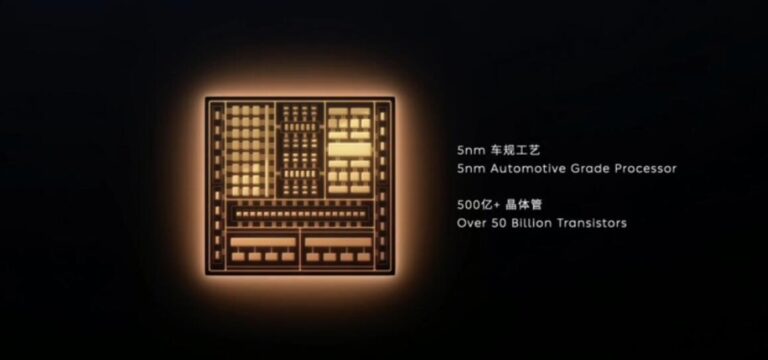Li Auto's local counterpart Nio has unveiled its first in-house developed autonomous driving chip, which will be used in the ET9 executive flagship sedan.
(Li Auto's Li L9 with AD Max. Image credit: Nvidia)
Chinese extended-range electric vehicle (EREV) maker Li Auto (NASDAQ: LI) has chosen Nvidia's Drive Thor centralized car computer to power its next-generation fleet, the US chip giant announced overnight.
Nvidia unveiled Drive Thor, a new system for autonomous driving, on September 20, 2022, as a successor to Drive Orin, targeting the automaker's 2025 models.
The system-on-a-chip (SoC) delivers 2,000 teraflops (Tops) of performance, and manufacturers can use them all for the autonomous driving pipeline or use one part for in-vehicle AI and infotainment and another part for driver assistance.
(Nvidia Drive Thor. Image credit: Nvidia)
Nvidia's most advanced such SoC available at the moment is Drive Orin, which is being used by major EV makers including Li Auto, Nio (NYSE: NIO), Xpeng (NYSE: XPEV), and Zeekr, and can deliver 254 Tops of computing power each.
Notably, Nio unveiled its first in-house developed autonomous driving chip at Nio Day 2023 on December 23, which will be used in the ET9 executive flagship sedan.
Called the Shenji NX9031, the chip is built on a 5 nm process and has comparable computing power to four Nvidia Drive Orin Xs, Nio founder, chairman, and CEO William Li said at the time.
Li Auto currently sells in the Li L7, Li L8, and Li L9 models, offering three trim options -- Air, Pro, and Max.
The Air and Pro versions of the Li Auto models don't have LiDAR, and the smart driving chip is the Journey 5 from local chipmaker Horizon Robotics, with 128 Tops of computing power.
The Max version comes with one AT128 LiDAR supplied by Hesai Technology and two NVIDIA Orin X chips for a total computing power of 508 Tops.
The Air and Pro versions of the Li Auto models support intelligent assisted driving on highways and city loops, while the Max version additionally supports urban roads.
The AI car computer of choice for today's intelligent fleets is Nvidia Drive Orin, with automakers increasingly looking to the advanced capabilities and AI performance of its successor, Nvidia Drive Thor, for their future vehicle roadmaps, Nvidia's vice president of automotive, Wu Xinzhou, said overnight.
Geely's Zeekr also began using Nvidia's Drive Orin chips in the Zeekr 007, which was launched in late December, after the company's other models used Mobileye's smart driving chip and an assisted-driving system built on it.
(Nvidia Drive Orin. Image credit: Nvidia)
When Nvidia unveiled Drive Thor in September 2022, it said that the first customer that would use Drive Thor is Zeekr, which will integrate Drive Thor on its centralized on-board computers for its next-generation smart EVs and begin production in early 2025.
Great Wall Motor will build Coffee Pilot, an in-house developed intelligent driving system based on the Drive Orin computing platform, according to the overnight press release by Nvidia.
Coffee Pilot can support parking, highway and city scenarios for full-scenario smart navigation and assisted driving functions without the need for high-precision maps.
Great Wall Motor partnered with Nvidia to develop the smart driving system and will launch the first model equipped with the system in the first half of this year, according to Nvidia's press release.
In addition, Xiaomi EV's first model, the SU7, is built on a dual Drive Orin configuration that enables highway driving capabilities, Nvidia said.
Xiaomi EV debuted the SU7 on December 28, saying it aims to have city pilot assisted driving functionality in 100 cities by the end of 2024.




